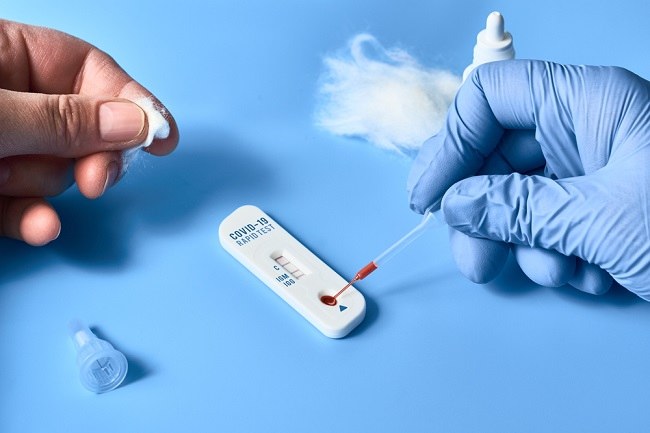Some people may not know the difference between pneumonia and tuberculosis. In fact, not a few consider the two as the same two conditions. However, pneumonia and tuberculosis are two different diseases, as well as their treatment.
The difference between pneumonia and tuberculosis (tuberculosis) can be identified from the causes and symptoms. Pneumonia is an inflammation that causes the lungs to fill with fluid or pus and makes it difficult for the sufferer to breathe.

Meanwhile, TB is an infection that not only occurs in the lungs, but also spreads to other organs of the body, such as the brain, lymph nodes, and spine.
In certain cases, a person can suffer from pneumonia and tuberculosis at the same time. This is what may cause the two diseases to be difficult to identify.
Difference Between Pneumonia and Tuberculosis Based on the Cause
Pneumonia is an inflammation of the lungs caused by a bacterial, viral, or fungal infection. One type of virus that can cause pneumonia is the Corona virus.
Viruses and bacteria that cause pneumonia can be transmitted through the air or by physical contact with people with pneumonia. A person can also get pneumonia when they come into contact with surfaces that have been contaminated with viruses or bacteria that cause pneumonia.
Meanwhile, TB is caused by bacteria Mycobacterium tuberculosis. A person can be infected with TB bacteria through splashes of saliva when someone with tuberculosis is coughing, sneezing, or even talking.
Unlike the pneumonia virus or bacteria that can spread through the surface of objects, TB germs cannot survive long on the surface of objects.
Difference Between Pneumonia and Tuberculosis Based on Symptoms
There are several symptoms that can appear when someone has pneumonia, including:
- Fever
- Cough with phlegm
- Hard to breathe
- Chest pain when breathing or coughing
- Weak
If treated immediately, pneumonia can generally be overcome and the sufferer can return to breathing normally. However, pneumonia usually gets worse quickly if it is experienced by infants, children, people who have weak immune systems, and the elderly.
Severe pneumonia can cause complications such as: acute respiratory distress syndrome (ARDS) or respiratory failure. Therefore, direct treatment by a doctor needs to be done immediately.
Meanwhile, the bacteria that cause TB attack the body slowly. Symptoms of this disease usually only appear after a few weeks or months since a person is exposed to TB germs. The following are some of the symptoms of tuberculosis:
- Cough that doesn't go away for more than 3 weeks
- Bleeding cough
- Loss of appetite and weight loss
- Chest pain
- Difficult to breathe
- Fatigue
- Sweating at night
- Fever for more than 1 month
Other symptoms caused by TB can be related to infected organs, for example, bone pain shows symptoms of spinal TB or swollen lymph nodes due to glandular TB.
You need to get treatment from a doctor immediately if you experience symptoms of tuberculosis, especially if you have had direct contact with people with tuberculosis.
To diagnose pneumonia and tuberculosis, doctors need to perform a physical examination and supporting examinations, such as blood tests, sputum examinations, sputum cultures, and X-rays.
Pneumonia and TB Treatment
If you are diagnosed with pneumonia or tuberculosis, treatment is generally done by giving medicines by a doctor that must be consumed according to the instructions for use.
For pneumonia, treatment is carried out based on the cause of pneumonia and its severity. Pneumonia due to bacterial infection can be treated with antibiotics. Similarly, pneumonia due to viral infection is treated with antiviral drugs and pneumonia due to fungal infection with antifungal drugs.
Doctors can also prescribe other drugs to support the patient's recovery process and relieve symptoms of pneumonia, such as NSAIDs to relieve pain and fever due to pneumonia, and cough medicines to relieve severe coughs.
Treatment of pneumonia generally takes about 1-3 weeks, depending on the severity of the disease experienced by the patient.
Unlike pneumonia, TB treatment usually lasts quite a long time, which is about 6-12 months. Patients with tuberculosis need to continue taking antituberculosis drugs (OAT), even though the symptoms of TB are felt to have improved or disappeared.
This is important to ensure that the germs that cause TB die completely and so that the disease does not spread to other people.
Pneumonia and tuberculosis are two different conditions, but some of the symptoms are sometimes similar. If you experience symptoms of pneumonia or tuberculosis, immediately consult a doctor to confirm the diagnosis of the disease you are experiencing.
After the diagnosis of the disease has been confirmed, the doctor will provide the appropriate treatment.









